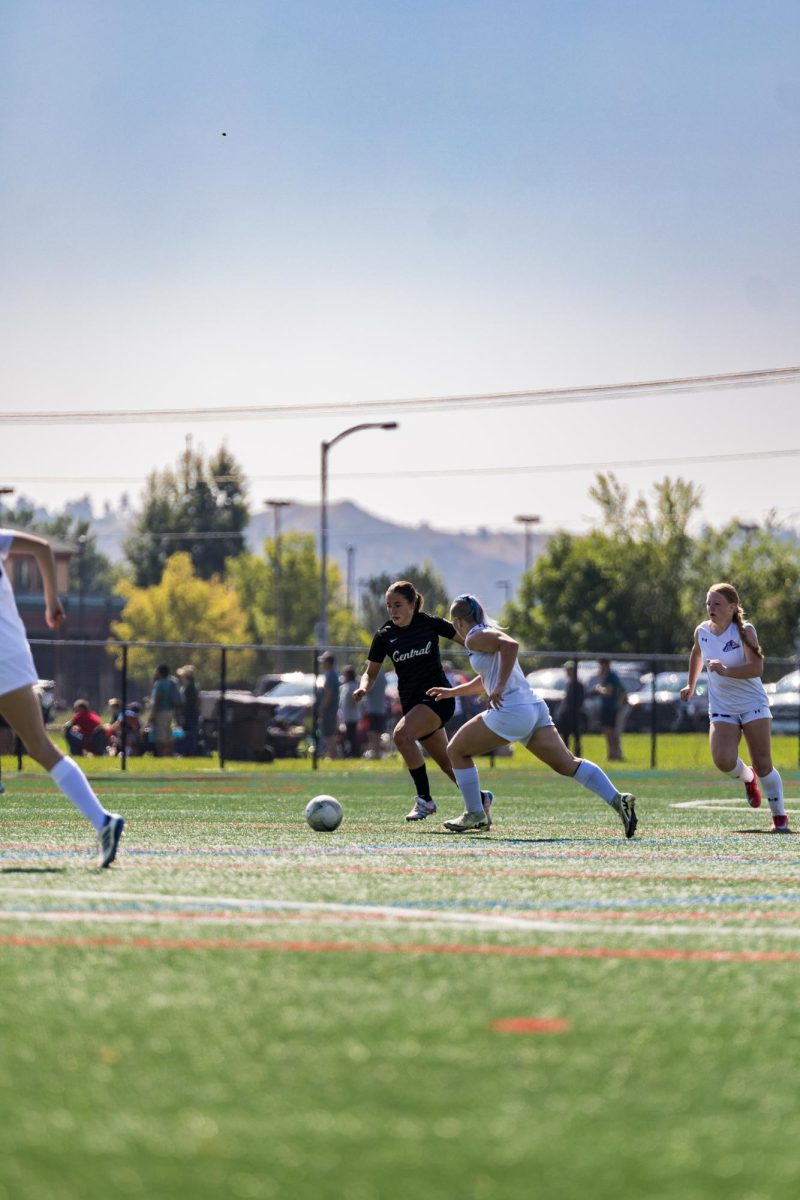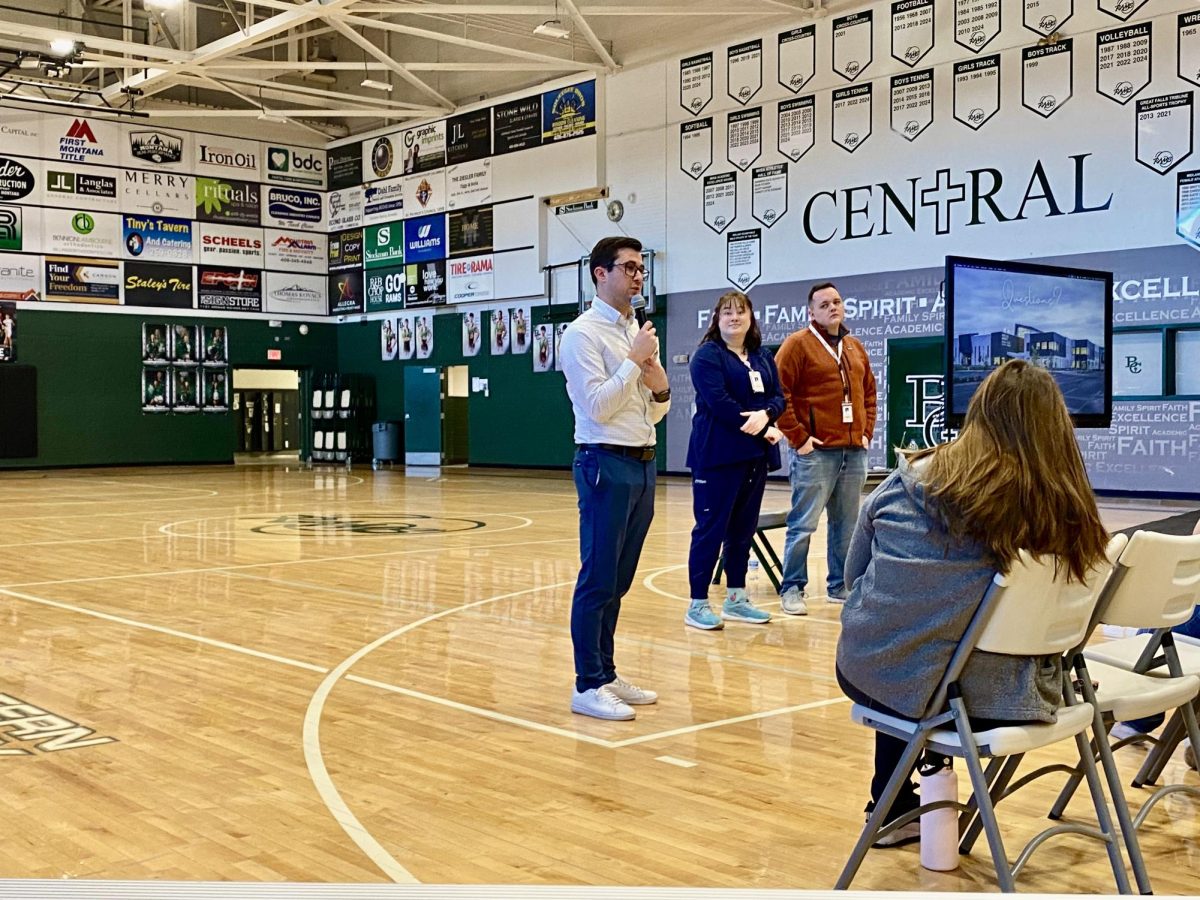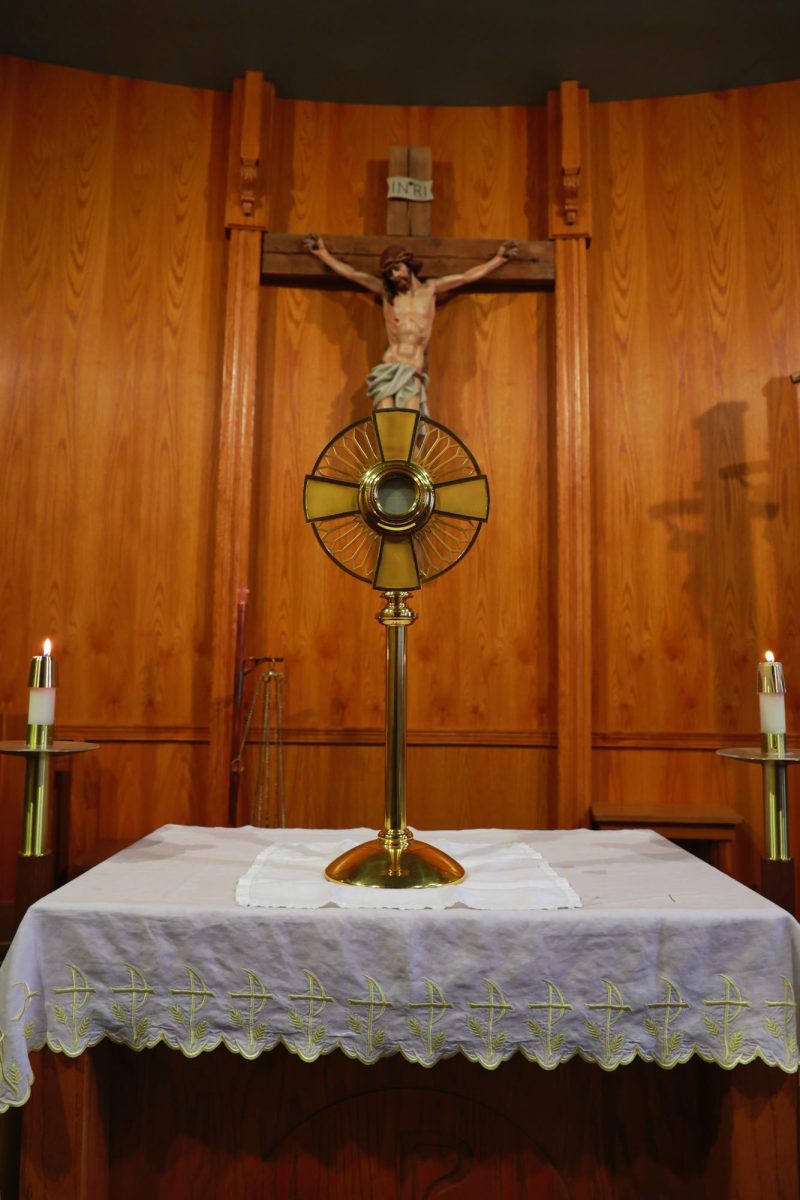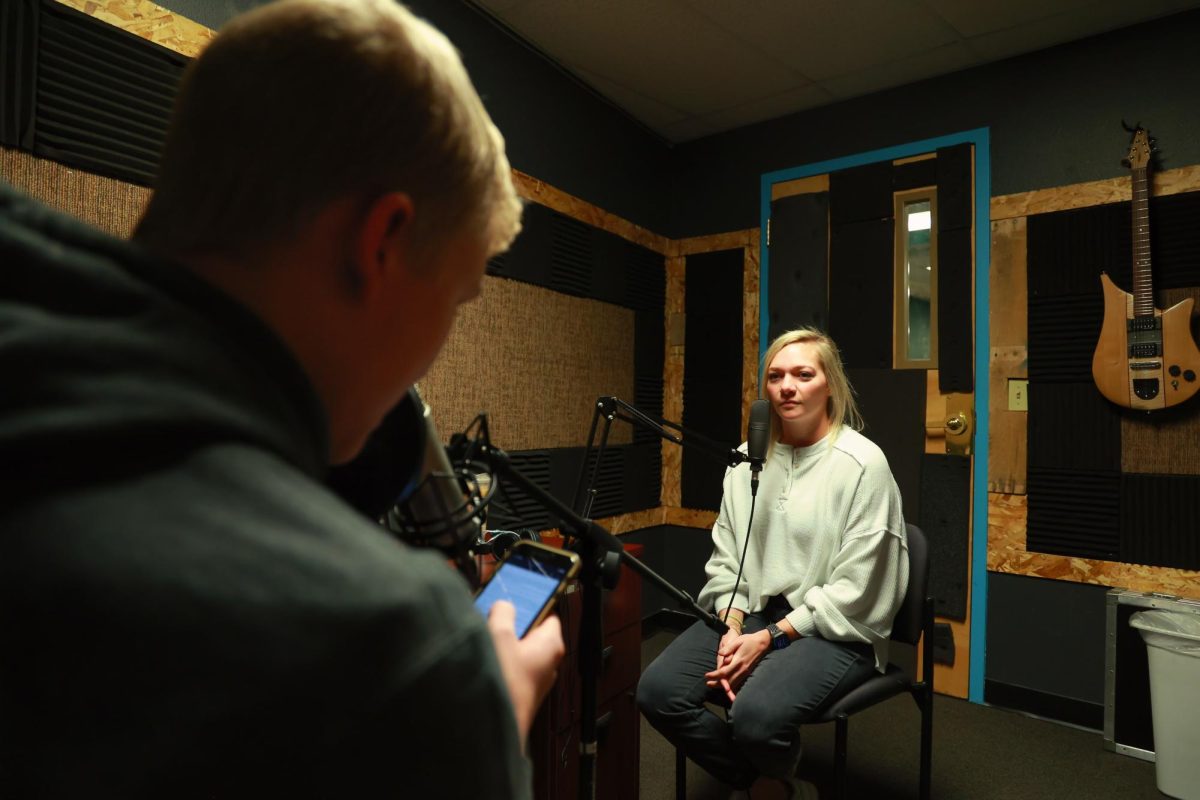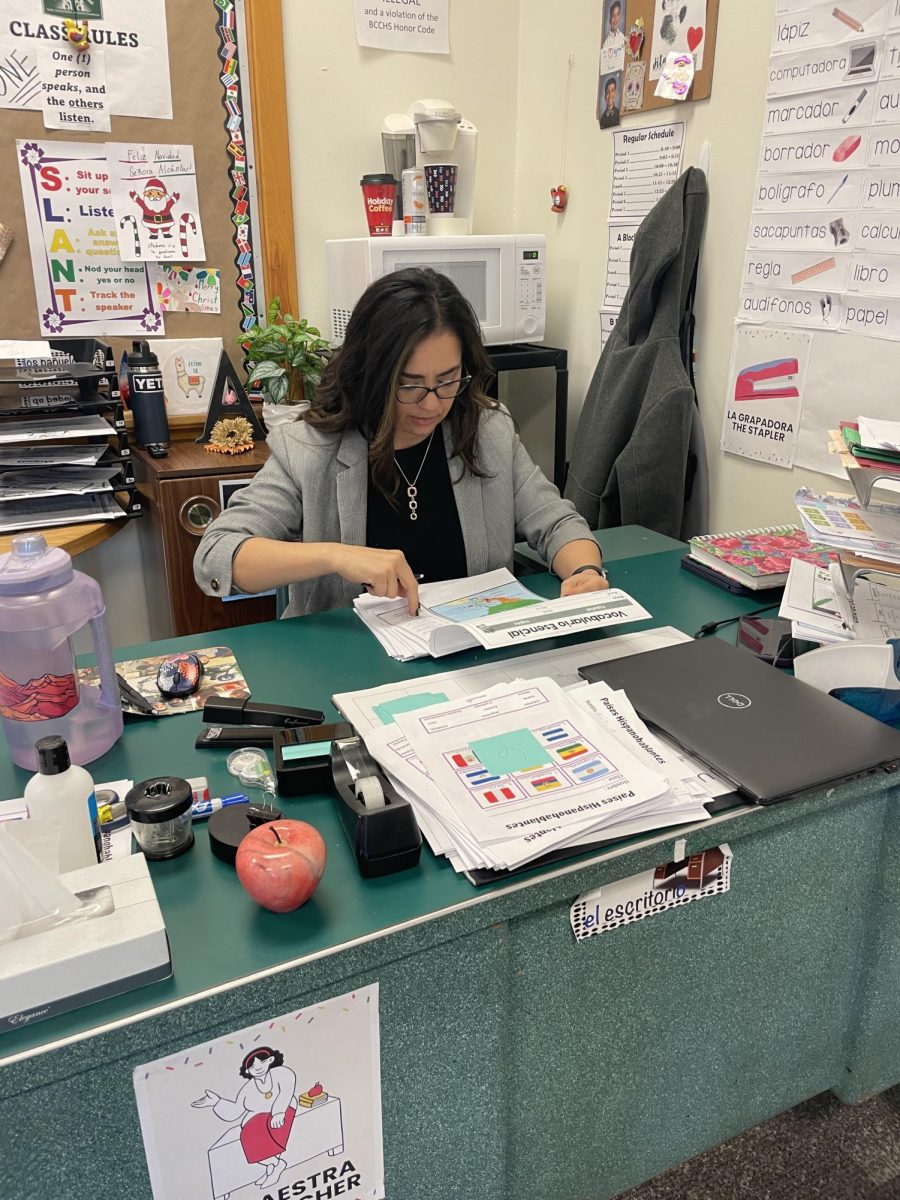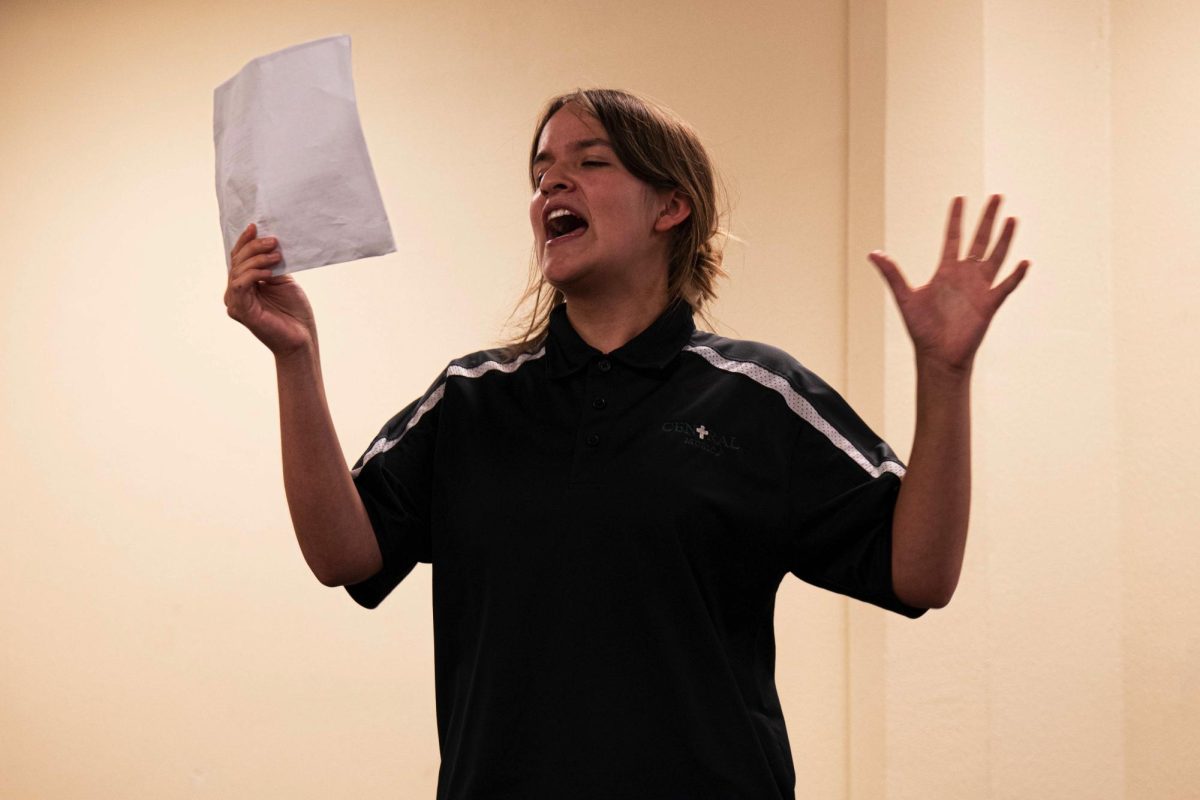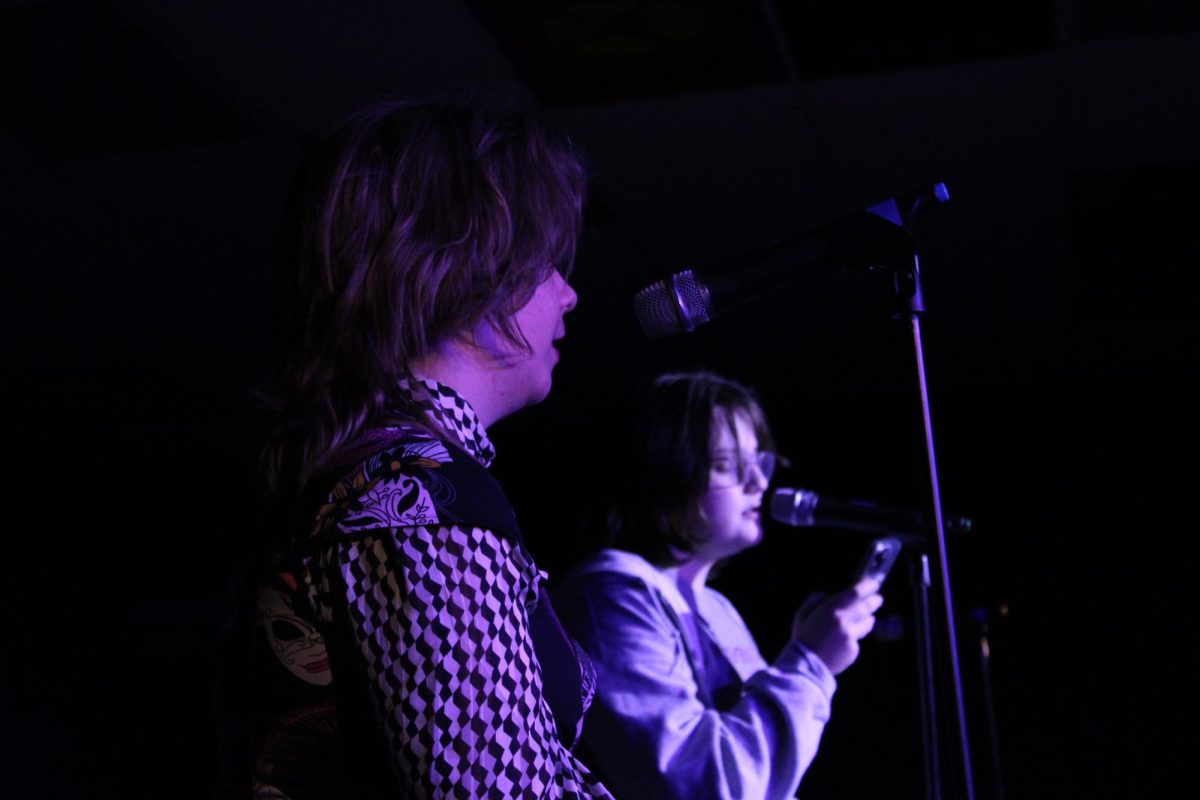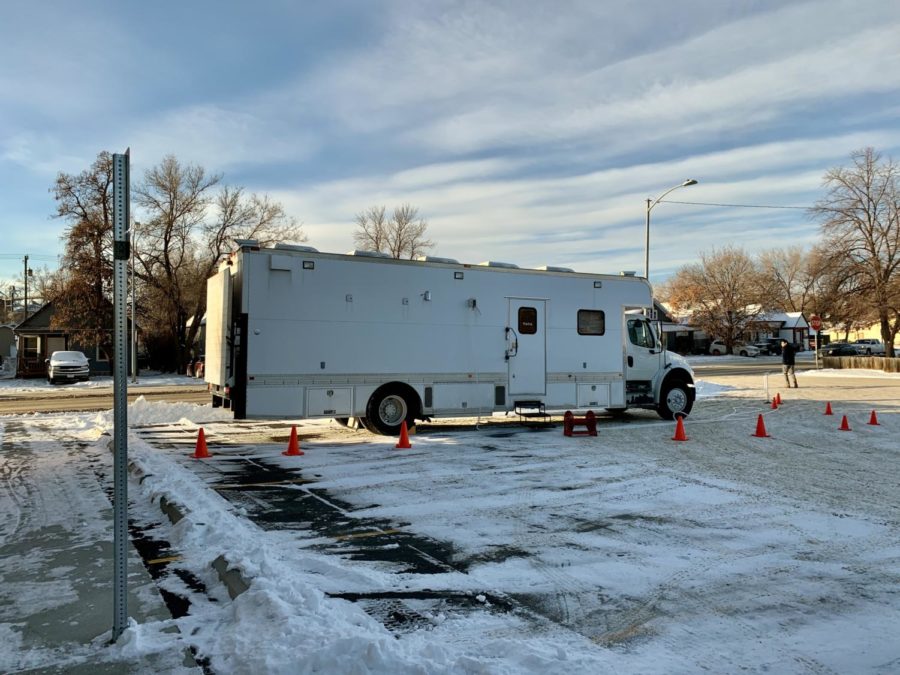Billings Superfund Site Requires Contamination Testing at BCCHS
February 28, 2023
In early February, twelve students in Central’s AP Chemistry class headed outside for a field trip of sorts: a tour of a Trace Atmospheric Gas Analyzer (TAGA).
It wasn’t an ordinary field trip, though. The TAGA was sent from North Carolina to Billings to help assess an EPA (Environmental Protection Agency) Superfund site, an area contaminated with hazardous waste. Well-known Superfund sites include Niagra Falls’ Love Canal and Butte’s Berkely Pit.
BCCHS is located within the expansive Billings Superfund site, which stretches from the south-central part of the city to the edge of downtown.
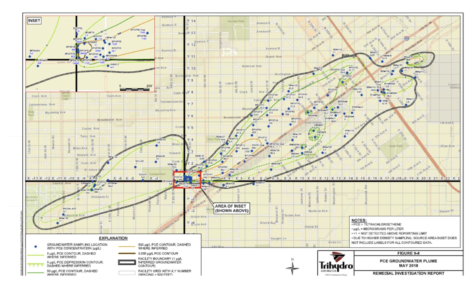
Jason Rappe is a project manager on the Superfund site team for the Montana Department of Environmental Quality (DEQ). He addressed the Billings City Council in a December 5th work session. “Historic dry cleaning operations across the city have contaminated the groundwater with solvents,” Rappe stated.
The primary solvents of concern are perchloroethylene (PCE) and trichloroethylene (TCE). These solvents are highly volatile, which means that they evaporate very easily. “What makes them good at dry cleaning makes them bad for people’s homes,” Rappe explained.
In December 2022, a flyer was mailed by the EPA, Montana DEQ, and the Montana Department of Public Health and Human Services (DPPHS) to homes within the 850-acre plume site. That flyer states that vapors released from the contamination may pose short-term and long-term risks to public health. Short-term effects may include “dizziness, headaches, nausea, and poor coordination,” according to the document. Longer-term risks listed include neurological symptoms, immune effects, liver or kidney effects, and certain cancers.
The risks are higher in older buildings, especially in basements and in buildings that lack sufficient air circulation. BCCHS was constructed in 1947 and does not have an air circulation/ventilation system, instead relying on radiators for heat.
Given the information on Central, the EPA set up air sampling systems in the basement of the high school in October 2022, primarily in the rooms utilized by the music and art departments, which are housed in the building’s basement.
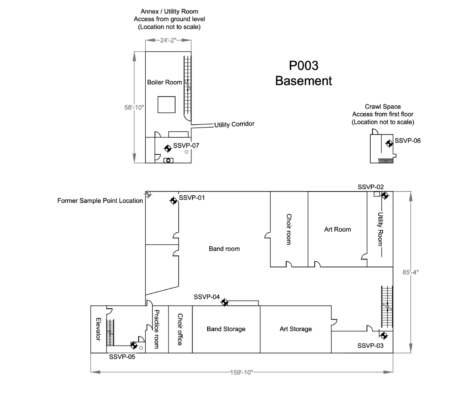
Testing results at Billings Central have not yet been made publicly available.
BCCHS is not alone in having air sampling conducted, however. According to the most recent publicly available data, 50 structure indoor air samples have been taken throughout Billings, along with 140 structure sub-slab samples. Nine Billings homes have been deemed eligible for installation of a vapor mitigation system or sub-slab depressurization system to mitigate the risks posed by high levels of contamination.
At the December 5th Billings City Council work session, council members pushed for answers on the health effects of the contamination, as well as the pace at which EPA was acting. The current plan under discussion, per Rappe, is to have mitigation systems installed in eligible contaminated buildings between two and three years from now.
To help assist with the project, the EPA brought in the TAGA that a handful of BCCHS students were able to tour. The TAGA serves as a mobile lab to further assess buildings for contamination.
While the testing and remediation process will take time, negative real-world effects of the contamination are already apparent in the community, including at BCCHS. For example, the contamination caused by the dry-cleaning chemicals has notably hindered the construction of the new elevator at the high school. “The elevator shaft was going so deep, it was touching groundwater,” Rappe said. “Because that water was so contaminated, they couldn’t discharge it back into a stormwater sewer,” As a result, BCCHS had to contract a company to treat the water until it was safe to discharge, adding time and cost to the project.
Roger Hoogerheide is the EPA Remedial Project Manager for the Billings Superfund site and knows the background of the issue well. Hoogerheide says that the problem dates back to the late 1960s and early 1970s. During that time period, a Billings dry cleaning business disposed of dry cleaning fluids into a drain field, which then migrated down into the groundwater. “At the time, there were no environmental regulations, so what they did was not illegal,” Hoogerheide said. “One could say it was immoral, but it wasn’t illegal at the time.”
The state of Montana was aware of the issue as far back as 1993, but did not deem it a particularly high priority and concluded that no further action was necessary at that time. But as scientists’ understanding of the risks associated with the particular chemicals that had leached into the groundwater grew, more aggressive actions were taken to contain and mitigate the contamination. A fact sheet on the Billings PCE Superfund website, published jointly by the EPA and Montana DEQ, states that the earliest remedial action was taken in 2007.
In 2014, as the costs of the cleanup effort began to rise, the EPA sued Big Sky Linen Supply, determined to be the primary source of the contamination, for $10 million to help cover the costs of remediation. The lawsuit, filed in US District Court in Billings, resulted in the business agreeing to pay the agency $1.53 million.
Still, the contamination issue persisted, and in September 2021, the EPA officially designated the area as a Superfund site on the National Priorities List. “EPA got involved because of the size of the project and the amount of money it was going to cost. The state of Montana didn’t have the resources or the capability to take this type of project,” Hoogerheide said.
The issue won’t be one that can be fixed quickly. Hoogerheide says that it will likely take over 80 years until groundwater is safe enough to be used as drinking water.
In the meantime, the EPA will install radon mitigation systems or carbon filtration systems in structures with contamination issues. Hoogerheide says that he could foresee such a system being installed in Billings Central.
While the work to analyze and address the contamination continues, Hoogerheide says that the data collection and remediation process has been made much easier by cooperation from the Billings community. “I really appreciate the acceptance that the community has provided to EPA to allow us to complete this investigation.”
This story will be updated when air sample testing results for BCCHS become available.










